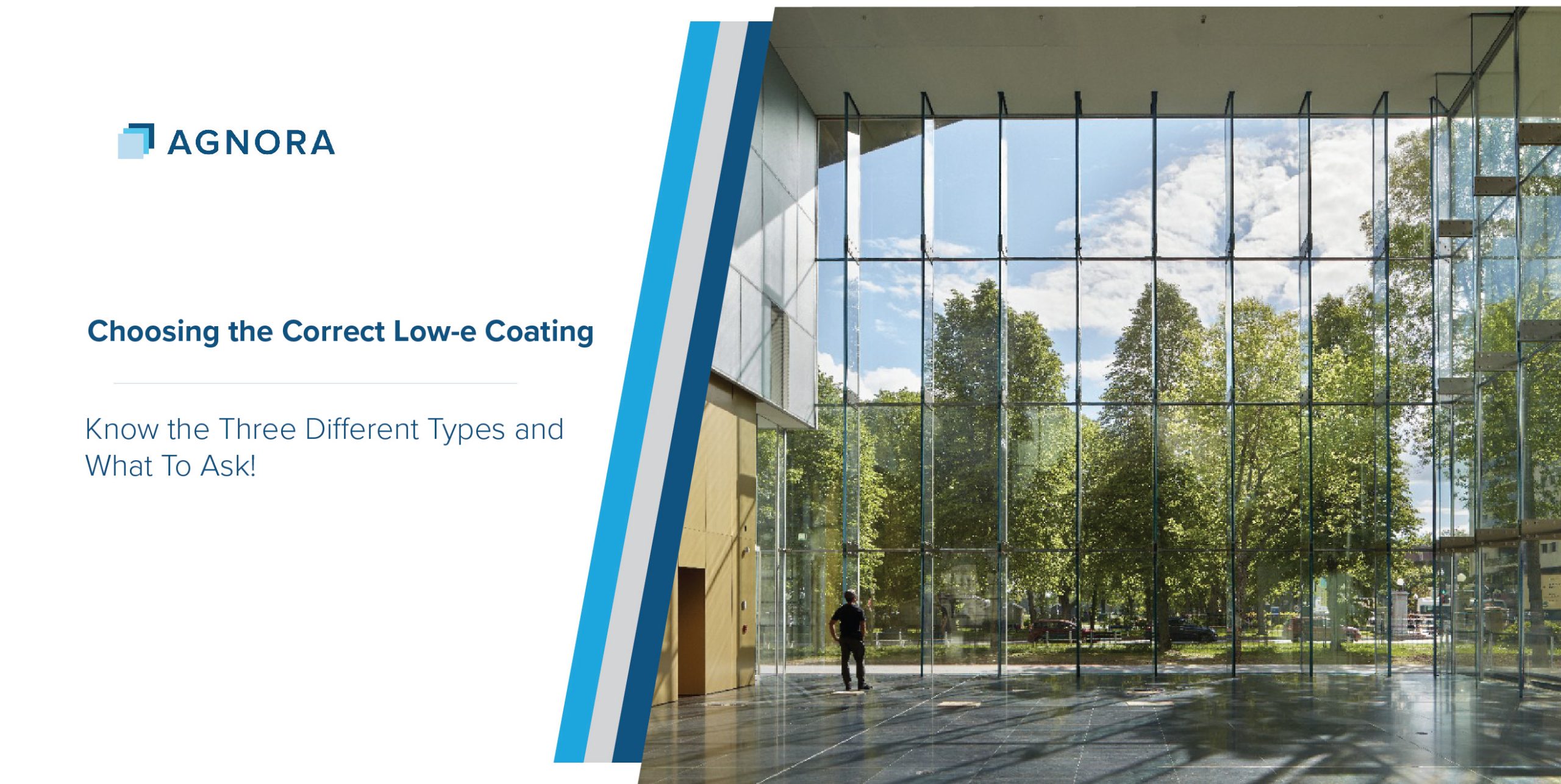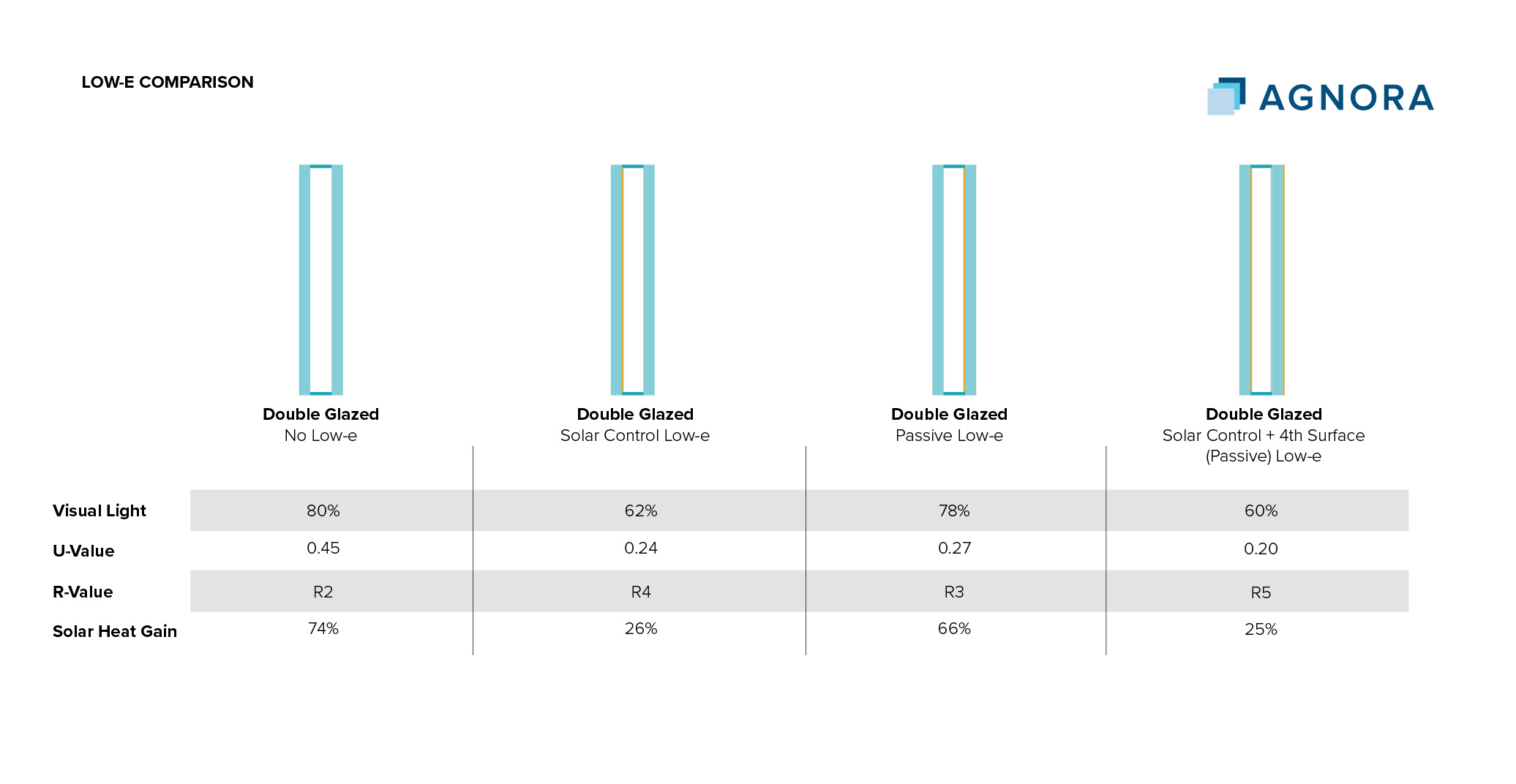
July 26, 2024
When it comes to high-efficiency windows, one of the key elements to consider is the type of Low-e (low-emissivity) coating. Low-e coatings are microscopically thin layers of metallic oxide applied to the glass surface to enhance energy efficiency by reflecting infrared light and minimizing heat transfer.
Understanding the three different levels of Low-e coatings—solar control, passive, and 4th surface—will help you make an informed decision for your home or building project. Here’s a comprehensive guide to Low-e coatings and how to choose the right one.
How Low-e Coatings Work
Low-e coatings are designed to reduce the amount of ultraviolet and infrared light that can pass through glass without compromising the amount of visible light transmitted. This means that Low-e windows can keep your home cooler in the summer and warmer in the winter while reducing your energy bills. Each type of Low-e coating offers distinct benefits, making it essential to choose the right one based on your specific needs.
Solar Control Low-e Coatings
Solar control Low-e coatings are designed for climates with hot summers or where the sun’s intensity is a significant concern. These coatings reflect the sun’s heat, preventing it from entering your home and thus reducing the need for air conditioning. Here’s how solar control Low-e coatings work and their benefits:
High Solar Reflectance:
They reflect a significant portion of the solar spectrum, especially in the infrared range, which is responsible for heat.
Enhanced Comfort:
By reducing solar heat gain, these coatings maintain a more consistent indoor temperature.
Energy Savings:
Lower cooling costs in the summer months make solar control Low-e coatings an excellent choice for homes in warmer climates.
Passive Low-e Coatings
Passive Low-e coatings are ideal for colder climates where retaining indoor heat is crucial. These coatings are designed to allow some of the sun’s heat to pass through while reflecting the indoor heat back inside. Here’s what you need to know about passive Low-e coatings:
Heat Retention:
They let in more of the sun’s natural heat while reflecting internal heat back into the room, reducing the need for heating systems.
Winter Efficiency:
They let in more of the sun’s natural heat while reflecting internal heat back into the room, reducing the need for heating systems.
Energy Savings:
By reducing the need for artificial heating, passive Low-E coatings can significantly lower heating bills.
4th Surface Low-e Coatings
4th surface Low-e coatings are the latest advancement in window technology. They are in fact a passive Low-e that is applied to the fourth surface or room side of the glass (in a double glazed IGU). This type of coating enhances thermal performance. Here’s why 4th surface Low-e coatings are beneficial:
Enhanced Insulation:
They provide an extra layer of insulation, further reducing heat transfer.
Year-Round Efficiency:
Suitable for all climates, as they improve both heating and cooling efficiency.
Maximized Performance:
Combining 4th surface Low-E coatings with Solar Control Low-e can optimize your window’s energy efficiency, making them ideal for high-efficiency jumbo windows.
Choosing the Correct Low-e for Your Window
It’s important to remember that ANY Low-e you choose will improve thermal performance, so it’s important to blend the appropriate level of Low-e to address how much solar heat gain, or heat from the sun that you desire.
See the chart below.
- The non Low-e has terrible insulation (R2) and is very hot letting 3/4 of the sun’s heat pass through to the interior.
- Adding a solar control coating has improved its thermal insulation to R4 and dramatically cut overheating to 1/4″ of the sun’s heat.
- If you wish to improve thermal performance only and allow the sun’s energy through to heat the space, passive illustrates how the window can maintain an R3 insulation rating, while also letting 2/3rd of the sun’s heat in.
- Lastly, the best of both worlds. The blend of solar control and 4th surface (passive Low-e) Low-e coatings cuts heat gain to 1/4 AND improves thermal efficiency to an R5. This is the ultimate configuration to keep the outside heat out, and the temperature you set inside, IN!
Low-e improve Solar and Thermal Performance
Understanding the different levels of Low-e coatings is crucial for making an informed decision that enhances the energy efficiency of your home. Whether you’re dealing with the intense heat of summer or the biting cold of winter, there’s a Low-e or blends of Low-e coating that can meet your needs. By choosing the correct Low-E for your windows, you can enjoy improved comfort, lower energy bills, and a more sustainable home.
If you have any questions or need further guidance on how to get the right Low-e for your windows, feel free to reach out to a window expert who can provide personalized recommendations based on your specific needs, local climate and energy code compliance.
